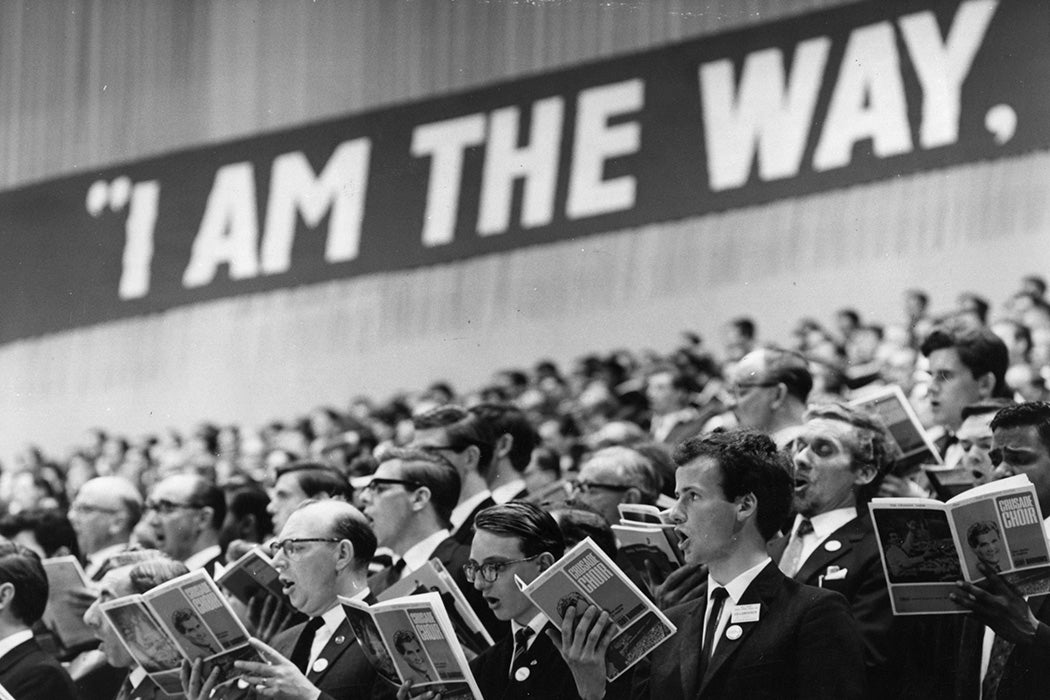From nearly the first moment rock and roll found its way onto records and radios, and into American homes, it was controversial. Fans and fear mongers have debated everything from lyrical content to music video imagery. But in 1950s and ’60s America, much of this discourse was based in religion. In many ways, music studies scholar Anna Nekola argues, this “helped lay the groundwork for today’s culture wars.” Conservative religious leaders believed they were locked in a battle against music that “threatened the family, the church and the very integrity of the nation.”
By the 1960s, three prominent voices had risen to the top. Frank Garlock headed the music department of Bob Jones University, while Bob Larson was a musician and DJ before taking his place in the anti-rock world. (“As a rock musician, I knew what it meant to feel the counterfeit anointing of Satan,” he claimed.) But perhaps the most well-known of the three was David A. Noebel, an Evangelical who was part of the anticommunist Christian Crusade. Noebel set his sights on one of the biggest bands of the era—the Beatles, whom he campaigned against in a series of lectures and religious tracts.
It wasn’t just the lyrics they hated, though they did feel that the music was a slippery slope to Communism. It was also the sound. “Rock ‘n’ roll corrupted because the music itself was sonically bad and innately immoral,” Nekola explains. These leaders believed music should be harmonic and uplifting, and rock was loud, brash, and harmful to the spirit. Garlock even helpfully created a list of the characteristics of good and bad music. Rock was decidedly bad. Its rhythm was likely to cause “sensual gyration,” its pitch was too “bluesy,” and its intensity—“as loud as possible, as long as possible”—was the first step on the path to ruin.
And if the haze of the Red Scare and morality was dissolved, what was left to see was a lot of racism. That rock was rooted in the Black gospel tradition hardly mattered to Noebel and company. In fact, that was part of the problem.
Weekly Newsletter
Larson, for example wrote, “All one needs to do is make a trip to the places where rock ‘n roll has its roots (Africa, South America, and India) and observe the ceremonies which often go along with this kind of music […] to know the direction in which we as a nation are headed.” And Noebel, John Haines explains, thought that rock was “a black invasion of white America.” In Noebel’s own words, rock, with its African roots, was “a designed reversion to savagery!” Both men argued that the music, with its steady, syncopated beat, was going to be the downfall of good, white American youth.
These early campaigns, Nekola argues, have “directly influenced contemporary culture warriors who continue to argue that popular culture, especially music, imperils the American nation.” It wasn’t all that long ago, after all, that the 1984 film Footloose took its cue from a real-life event. Pop culture is often defined by the opposition to it, but as Haines writes, “these voices are nevertheless vital to its history because they ultimately helped define the music and its culture.”







